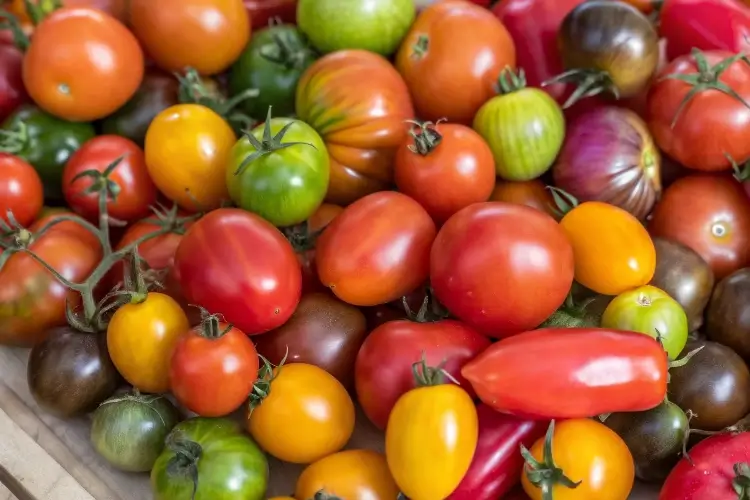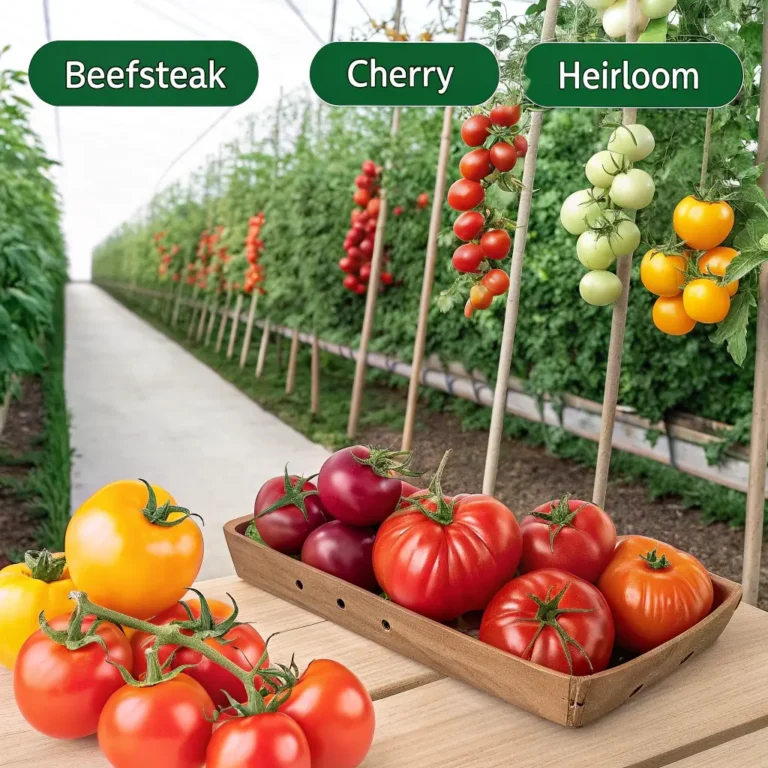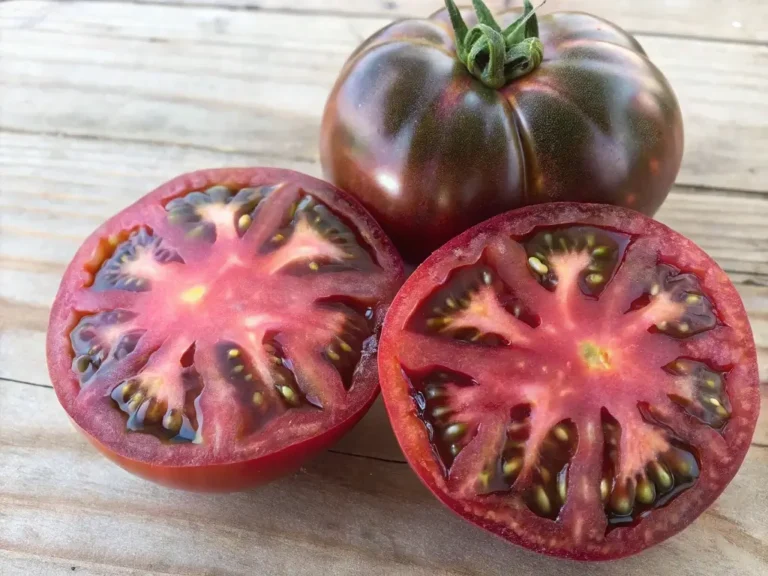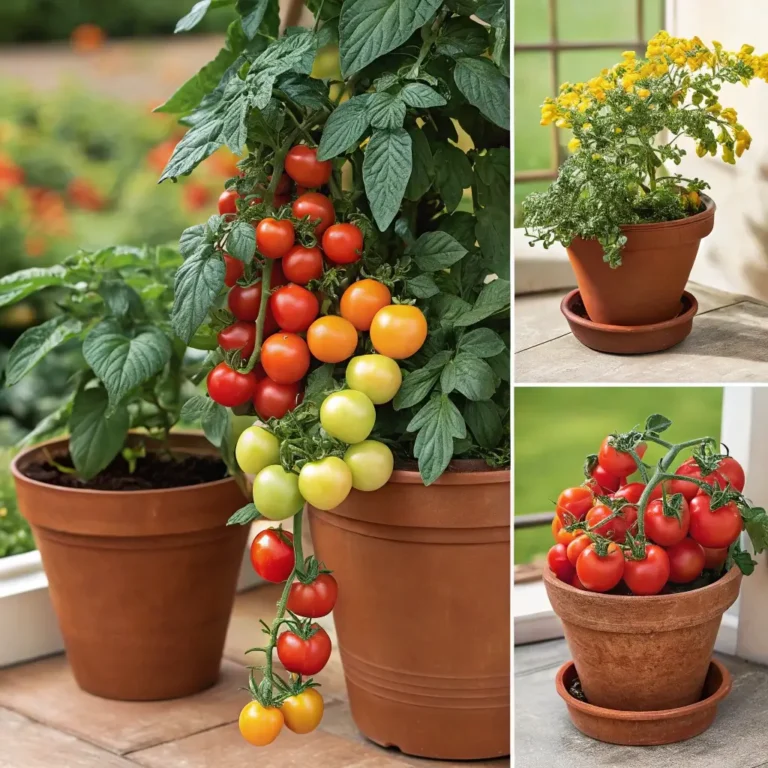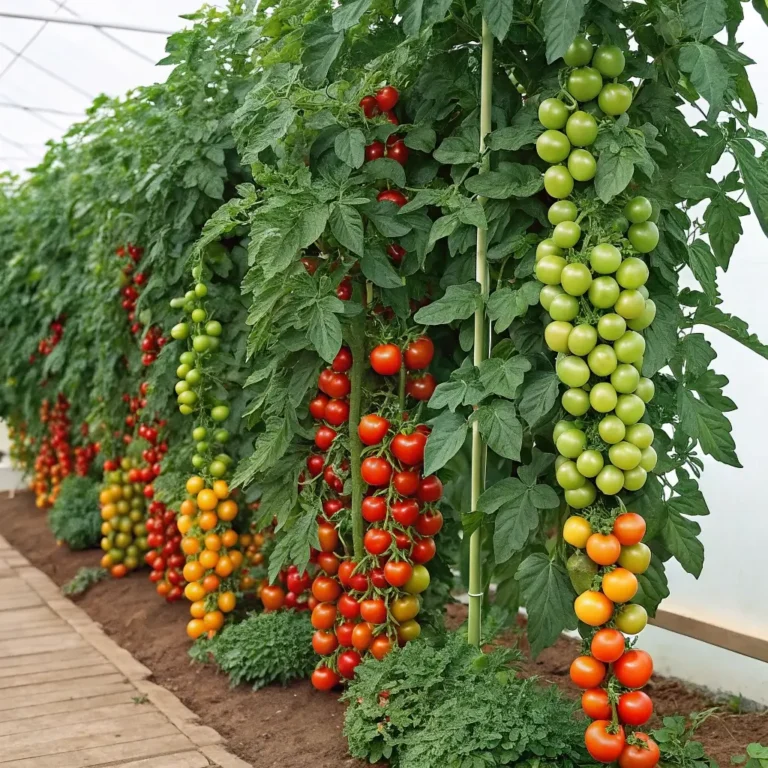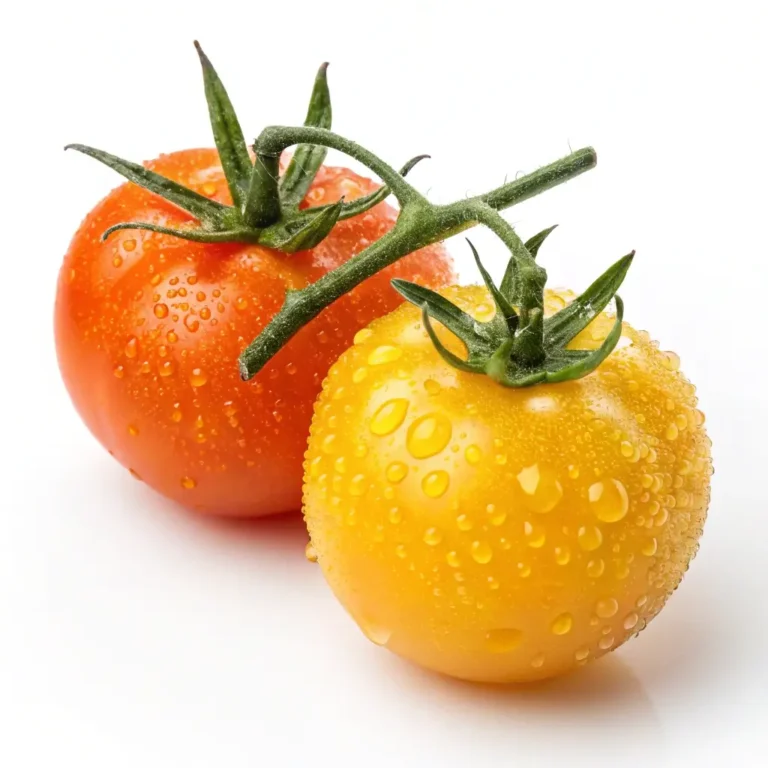15 Best Tasting Tomato Varieties You Can Grow at Home
Table of Contents
Introduction
Did you know that there are over 10,000 tomato varieties worldwide, yet most grocery stores only offer 3-5 commercial types? This limited selection means home gardeners are missing out on extraordinary flavors that can transform ordinary dishes into culinary masterpieces. Growing your own tomatoes opens up a world of taste sensations far beyond what supermarkets provide, with varieties that can be sweet as fruit, rich as wine, or complex as fine cheese. Whether you’re a seasoned gardener or a curious beginner, these 15 best tasting tomato varieties you can grow at home will revolutionize your understanding of what a tomato can truly taste like.
What Makes a Tomato Taste Great?
Before diving into our top varieties, it’s important to understand what contributes to tomato flavor. Great-tasting tomatoes have a balanced sugar-to-acid ratio, aromatic compounds that develop during ripening, and mineral content influenced by soil quality. Home-grown tomatoes typically contain 40% more flavor compounds than store-bought varieties, primarily because they’re allowed to ripen fully on the vine rather than being harvested green and artificially ripened during shipping.
The 15 Best Tasting Tomato Varieties
1. Brandywine
This Amish heirloom dating back to 1885 offers complex, sweet-yet-tangy flavor with hints of wine-like richness. Brandywines are large beefsteak tomatoes (up to 1.5 pounds each) with a distinctive pinkish-red hue and irregular shape. They require 80-100 days to mature but reward gardeners with unparalleled flavor depth.
2. Sun Gold
These cherry-sized golden-orange fruits deliver an intensely sweet, fruity flavor that’s 20% higher in natural sugars than typical red cherry tomatoes. Ready in just 57 days from transplanting, Sun Golds are perfect for impatient gardeners and consistently rank in the top three of taste tests nationwide.
3. Cherokee Purple
This pre-1890s heirloom features a unique dusky purple-pink exterior and green-tinged shoulders. The smoky, sweet flavor with subtle earthiness makes Cherokee Purple ideal for sandwiches and eating fresh. Medium-sized fruits (8-12 ounces) develop best flavor in hot weather.
4. Black Krim
Originally from the Isle of Krim in the Black Sea, these medium-sized tomatoes offer a distinctive smoky-sweet flavor with hints of saltiness. Their dark red-brown color with green shoulders intensifies with heat, making them perfect for regions with hot summers.
5. Green Zebra
These striking green fruits with yellow stripes offer a bright, zingy flavor with perfect sweet-acid balance. Developed in the 1980s by tomato breeder Tom Wagner, Green Zebras are technically modern but have achieved heirloom status due to their exceptional taste and unusual appearance.
6. San Marzano
The gold standard for sauce tomatoes, San Marzanos feature meaty flesh, few seeds, and a rich, sweet flavor with low acidity. Originally from Italy, they contain 24% more solids than other paste tomatoes, creating thicker, more flavorful sauces.
7. Mortgage Lifter
Developed by “Radiator Charlie” Byles in the 1930s to pay off his mortgage, these massive beefsteak tomatoes (up to 2 pounds) offer meaty, rich flavor with exceptional sweetness and minimal seeds. They’re remarkably prolific, often producing 50+ pounds per plant.
8. Paul Robeson
Named after the famous singer and actor, these Russian heirlooms feature distinctive smoky-sweet flavors with exceptional complexity. Their dark, brick-red medium-sized fruits (7-10 ounces) have consistently won flavor competitions worldwide.
9. Aunt Ruby’s German Green
Don’t let the green color fool you—these are fully ripe when they develop a slight yellow blush. Large beefsteak fruits offer a sweet, spicy flavor with a distinct tanginess that many consider the ultimate green tomato experience.
10. Kellogg’s Breakfast
These stunning orange beefsteaks (up to 1 pound) deliver exceptionally sweet, low-acid flavor perfect for those who typically find tomatoes too acidic. Their vibrant color indicates high beta-carotene content—32% higher than red varieties.
11. Chocolate Stripes
With mahogany coloring streaked with green stripes, these medium-large tomatoes offer rich, complex flavor notes reminiscent of dark fruits and wine. Their balanced sweetness makes them versatile for both fresh eating and cooking.
12. Pineapple
These massive yellow-red bicolor beefsteaks (up to 2 pounds) deliver true fruit-like sweetness with tropical hints. Their marbled interior creates stunning slices for sandwiches and salads, with flavor complexity that develops fully only when homegrown.
13. Black Cherry
These small, dark purple-brown cherry tomatoes offer concentrated flavor with wine-like richness unusual in small-fruited varieties. Incredibly productive plants provide season-long harvests of these perfect snacking tomatoes.
14. Costoluto Genovese
These deeply ribbed Italian heirlooms were specifically bred for sauce and paste. Their intensely tomato-forward flavor concentrates beautifully when cooked, and the high pectin content creates naturally thick sauces without reduction.
15. Japanese Black Trifele
These pear-shaped fruits with green-streaked shoulders offer smoky, rich flavor with balanced sweetness and acidity. Their unusual appearance and disease resistance make them increasingly popular with home gardeners seeking unique flavors.
Growing Tips for Maximum Flavor
The best-tasting tomatoes come from proper growing conditions. Follow these data-backed tips:
- Plant in soil with pH between 6.2-6.8 for optimal nutrient uptake
- Space plants 24-36 inches apart for proper air circulation
- Provide consistent watering (1-2 inches weekly) with slight reduction as fruits ripen to concentrate flavors
- Apply calcium-rich amendments to prevent blossom end rot
- Use organic fertilizers lower in nitrogen once flowering begins to prevent excessive foliage at the expense of fruit
Harvesting for Peak Flavor
Timing your harvest significantly impacts flavor. Studies show vine-ripened tomatoes contain up to 30% more flavor compounds than those picked early. For maximum taste:
- Harvest when fruits are fully colored but still firm
- Pick during mid-morning after dew has dried but before afternoon heat
- Allow tomatoes to finish ripening at room temperature—never refrigerate before fully ripe
- Use different varieties at different ripeness stages for culinary versatility
Conclusion
Growing these 15 best tasting tomato varieties at home connects you with extraordinary flavors impossible to find in stores. Beyond the superior taste, you’ll enjoy the satisfaction of sustainability, healthier eating, and discovering which varieties perform best in your specific microclimate. The true magic of homegrown tomatoes lies in their ability to transform ordinary meals into memorable experiences—all from plants that require relatively little space and investment. Start with 2-3 varieties this growing season, taking notes on flavor and performance, then expand your tomato portfolio each year for a truly personalized garden experience.
FAQs
Which tomato variety is best for beginners?
Sun Gold is ideal for beginners due to its early production, disease resistance, and consistent sweet flavor even under suboptimal conditions.
Can I grow these varieties in containers?
Absolutely! Determinate varieties like San Marzano or compact varieties like Black Cherry perform exceptionally well in containers (minimum 5-gallon size). Ensure proper drainage and consistent watering.
How do I save seeds from these heirloom varieties?
Harvest seeds from fully ripe fruits, ferment in water for 2-3 days to remove the gel coating, rinse thoroughly, and dry completely on paper towels before storing in a cool, dry place for up to 5 years.
Which variety has the longest shelf life after harvesting?
Roma-type tomatoes like San Marzano typically last 7-10 days at room temperature after harvesting, compared to 3-5 days for juicier varieties like Brandywine.
Can I grow different varieties close together?
Yes! Tomato varieties cross-pollinate only when you save their seeds. Growing different varieties side-by-side won’t affect the fruit quality or flavor in the current season.

